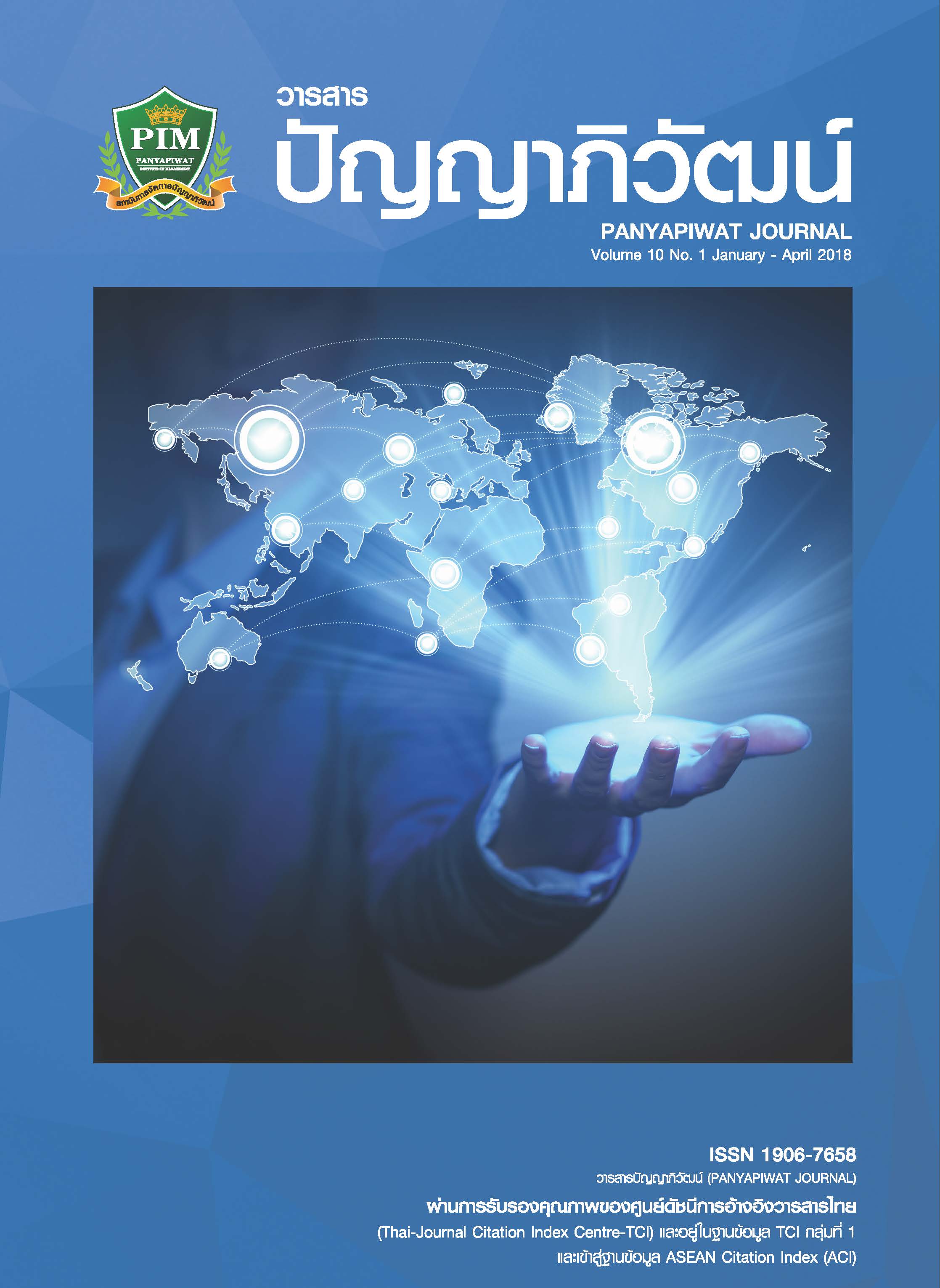การสอบคัดเลือกเข้ามหาวิทยาลัยของจีน (เกาเข่า): มุมมองเชิงอำนาจ
Main Article Content
บทคัดย่อ
การสอบคัดเลือกเพื่อศึกษาต่อในระดับอุดมศึกษาของประเทศจีน (จากนี้จะเรียกทับศัพท์ตามภาษาจีนว่า เกาเข่า - gaokao) เป็นการสอบที่มีการแข่งขันสูงสุดในประเทศจีนและอาจจะที่สุดในโลก เพราะนักเรียนที่สำเร็จระดับมัธยมศึกษาตอนปลายของจีนทุกคนต้องเข้าสอบก่อนก้าวสู่รั้วมหาวิทยาลัย คะแนนสอบเกาเข่าไม่ใช่เพียงคะแนนเพื่อเลื่อนระดับชั้นการศึกษาธรรมดา แต่เป็นคะแนนที่มีอำนาจกำหนดชีวิตของแต่ละคน ชื่อเสียงของมหาวิทยาลัยที่เรียนมีผลต่อการหางานของบัณฑิต เกาเข่ากลายเป็นเครื่องมือสำคัญที่ขับเคลื่อนสังคมจีนอย่างมีอำนาจ แม้จะเป็นการสอบสำหรับการศึกษาระดับสูง แต่เด็กส่วนใหญ่ถูกขับเคี่ยวให้สั่งสมศักยภาพในการสอบตั้งแต่เข้าเรียนระดับอนุบาล จนถึงการติวอย่างเข้มข้นในชั้นมัธยมศึกษาปีที่ 6 ที่เด็กต้องอยู่ภายใต้การควบคุมและบงการของครูอย่างเคร่งครัดเพื่อให้มั่นใจว่าทุกนาทีจะถูกใช้อย่างมีคุณค่า และส่งผลทางบวกต่อคะแนนสอบเกาเข่า โดยพ่อแม่ ผู้ปกครองรู้เห็นและสนับสนุนการเรียนที่เคร่งเครียดและยัดเยียดนั้น มีงานศึกษาวิจัยหลายชิ้นแสดงให้เห็นการสอบเกาเข่าว่า มีความสัมพันธ์กับอัตราการฆ่าตัวตายของเด็กวัยเรียนในจีน งานวิจัยชิ้นนี้มุ่งศึกษาอำนาจของการสอบเกาเข่า และการที่เกาเข่าใช้อำนาจนั้นขับเคลื่อนสังคมจีน โดยใช้การทบทวนวรรณกรรมเป็นหลัก
The nationally unified college entrance examination in China (hereinafter referred to as gaokao) is the most important and most influential in China. It is the largest scale selective exam in China, if not in the world, with fierce competitions that all high school students have to take before enrolling higher education institutions. Gaokao score is not just an exam score but the score that has a power to determine entire life of individual. It is turned to be an influential mechanism that powerfully manipulated the entire China society. Though it is an examination for higher education, most Chinese students are trapped in exam-oriented education system to achieve gaokao’s high score since they are in kindergarten. The hardest time of a student’s life is in high school where students have to shoulder extreme pressures both from their parents and teachers. Many academic researches show the association between gaokao examination and high suicide rate of Chinese youth. This paper is to study the power of gaokao in manipulating and mobilizing Chinese society and also the origin of its power by using review literature approach.
Article Details
“ข้าพเจ้าและผู้เขียนร่วม (ถ้ามี) ขอรับรองว่า บทความที่เสนอมานี้ยังไม่เคยได้รับการตีพิมพ์และไม่ได้อยู่ระหว่างกระบวนการพิจารณาลงตีพิมพ์ในวารสารหรือแหล่งเผยแพร่อื่นใด ข้าพเจ้าและผู้เขียนร่วมยอมรับหลักเกณฑ์การพิจารณาต้นฉบับ ทั้งยินยอมให้กองบรรณาธิการมีสิทธิ์พิจารณาและตรวจแก้ต้นฉบับได้ตามที่เห็นสมควร พร้อมนี้ขอมอบลิขสิทธิ์บทความที่ได้รับการตีพิมพ์ให้แก่สถาบันการจัดการปัญญาภิวัฒน์หากมีการฟ้องร้องเรื่องการละเมิดลิขสิทธิ์เกี่ยวกับภาพ กราฟ ข้อความส่วนใดส่วนหนึ่งและ/หรือข้อคิดเห็นที่ปรากฏในบทความข้าพเจ้าและผู้เขียนร่วมยินยอมรับผิดชอบแต่เพียงฝ่ายเดียว”
เอกสารอ้างอิง
Ash, A. (2016). Is China's gaokao the world's toughest school exam? Retrieved March 13, 2017,from https://www.theguardian.com/world/2016/oct/12/gaokao-china-toughest-school-exam in-world
Calinescu, M. (1987). Five Faces of Modernity. In T. Wongyannawa. (Eds.). Centralisation of Arts and Decentralisation of Arts and Politics: From Post Modern to Modern. (pp. 203-274). Bangkok: Political Science Journal. [in Thai]
Carducci, L. (2012). Work in Progress: Chinese education from a foreign expert's perspective. Beijing China International Press.
China Radio International. (2012). China's gaokao (1). Retrieved March 15, 2017, from https://thai. cri.cn/247/2012/07/12/2255200044.htm [in Thai]
Deng, C. (2014). China's Cutthroat School System Leads to Teen Suicides. Retrieved March 13, 2017, from https://blogs.wsj.com/chinarealtime/2014/05/15/chinas-cutthroat-school-system leads-to-teen-suicides/
Ding, J. (2016). A Purpose Built School. Retrieved April 23, 2017, from https://www.youtube.com/watch v=sVhA4CPH8jE
Foucault, M. (2011). Surveiller et punir Gallimard, première. (T. Bhokdham, Trans.). Bangkok: Kobfai. [in Thai]
Hua, S. L. (2016). What is gaokao?: A look at China's most important exam. Retrieved April 2, 2017, from https://blog.tutorming.com/expats/what-is-gaokao-chinese-college-entrance-exam
Jordan, L. P., Ren, Q. & Falkingham, J. (2014). Youth education and learning in twenty-first century China: Disentangling the impacts of migration residences, and Kukao. Chinese sociological Review, 47(1), 57-83.
Kaewthep, K. & Hinwiman, S. (2010). From Political Economy Theorists to Communication Study (200 ed.). Bangkok: Chulalongkorn University Printing. [in Thai]
Li, L. Q. (2009). Education for 1.3 Billion: Former Chinese Vice Premier Li LanQing on 10 Years of Education Reform and Development. (N. Yaemsaengsang, Trans.). Bangkok: 1-Group Press. [in Thai]
Liang, C., Zhang, H., Li, H. & Ruan, D. (2012). Silent Revolution: Social Origins and University Matriculation at Peking University and Suzhou University, 1952-2002. In Y. Hua. (Eds.). Key-Point Schools and Entry into Tertiary Education in China. (pp. 128-153). Chinese Sociological Review.
Liu, H. & Wu, Q. (2006). Consequences of college entrance exams in China and the reform challenges. KEDI Journal of Educational Policy, 3(1), 7-21.
Lucas, S. R. (2001). Effectively Maintained Inequality: Education Transitions, Track Mobility, and Social Background Effects. In Y. Hua. (Eds.). Key-Point Schools and Entry into Tertiary Education in China. (pp. 128-153). Chinese Sociological Review.
Roberts, D. (2014). China Exam System Drives Student. Retrieved March 15, 2017 from https://www.bloomberg.com/news/articles/2014-05-15/china-exam-system-drives-student-suicides
Shanghaiist. (2015). Hebei school installs prison-like iron bars to prevent suicide attempts. Retrieved May 5, 2017, from https://shanghaiist.com/2015/04/21/hebei-school-installs-prison-like-bars prevent-suicide.php
Wang, L. (2011). Social exclusion and inequality in higher education in China: A capability perspective. International Journal of Educational Development, 31, 277-286.
Wang, Y. & Ross, H. (2010). Experiencing the Change and Continuity of the College Entrance Examination; A Case Study of Gaokao County, 1996-2010. Chinese Education and Society, 43(4), 75-93.
Wongyannawa, T. (2014). Non-diversity of diversified culture (2nd ed.). Bangkok: Sommut Printing. [in Thai]
Woradilok, T. (1995). Chinese History. Bangkok: Sukkaphab Jai. (in Thai]
Zhu, M. (2014). College admissions in China: A mechanism design perspective. China Economic Review, 30, 618-631.


